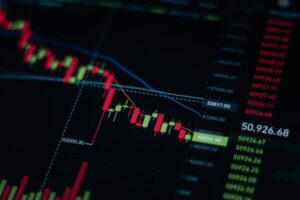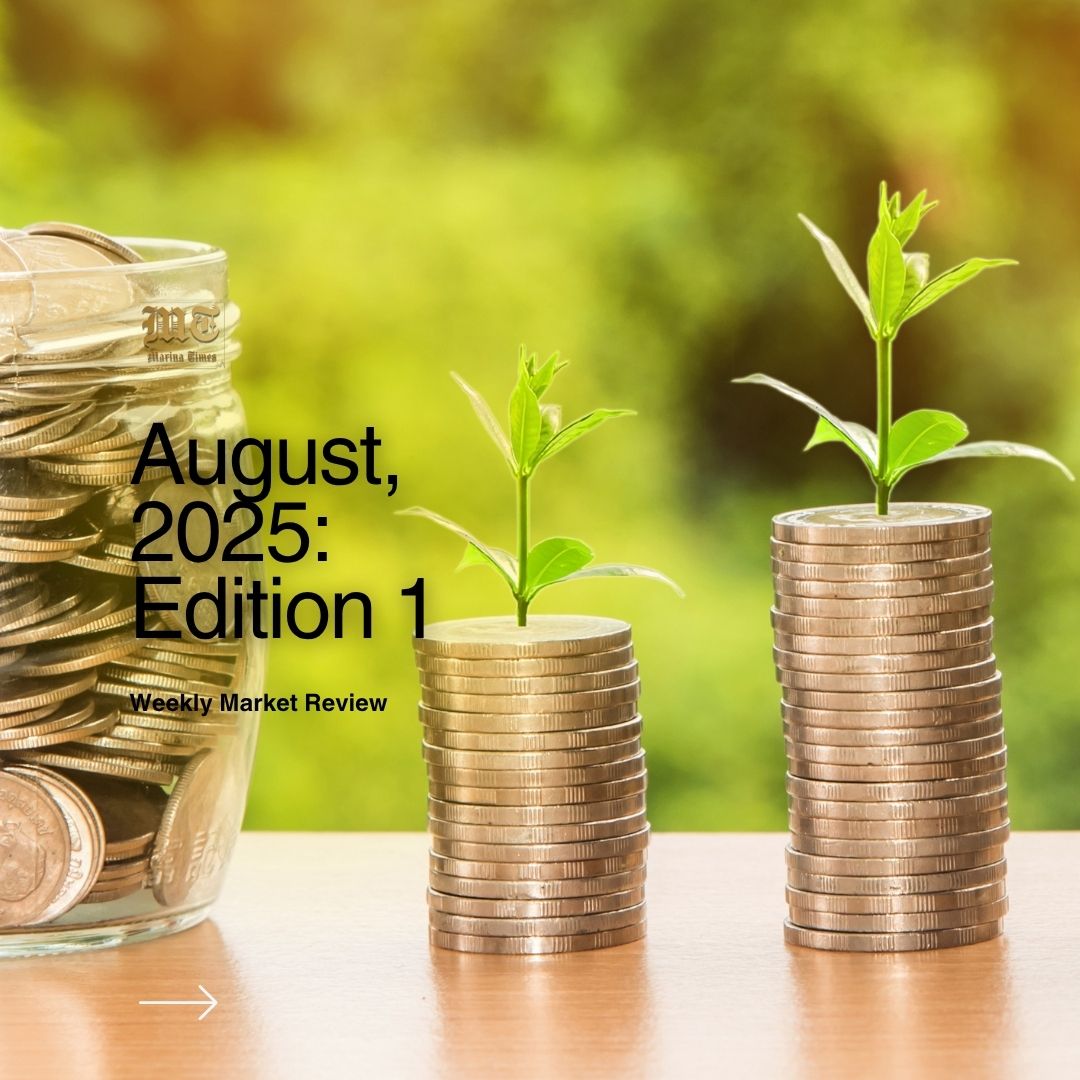

The FGN bond auction held on July 28, 2025 has been considered by many market stakeholders to be a very controversial yet successful outing for the Debt Management Office, (DMO), with unusually low offered volumes, oversubscription, terribly low stop rates and an overall oversale by the DMO. Stop rates on the 5-Year and 7-Year bonds dropped sharply by over 200bps, reflecting the calculated push to lower borrowing costs amid an improving inflationary outlook and excess liquidity. At the OMO auction conducted on the same day, there was zero interest in the 113-day bill and overwhelming demand for the 204-day paper (₦1.63 trillion in bids against a ₦300 billion offered). The Central Bank closed with a stop rate of 23.87% on the 204-day tenor, an outcome underscoring a clear market pivot toward higher-yielding, medium-term instruments reflective of the CBN’s targeted tightening within a segmented investor landscape, aimed at managing offshore flows while preserving domestic rate stability.
The Nigerian financial system was awash with cash throughout the week, with the Money market opening with a surplus of over ₦1.60 trillion on Friday. Consequently, interbank rates held between 26.00% and 27.00% during the week, with the Overnight (O/N) rate peaking at 27.00% and the Open Repo Rate (OPR) steady at 26.50%. However, they marginally closed at 26.98% and 26.40%, respectively. The Naira continued trading within a tight band between $/₦1,535.50 and $/₦1,532.00 during the week, and closed at $/₦1,535.50 on Friday.
The results of the bond auction on July 28, 2025 were indicative of a deliberate yield compression strategy and excessive bullish sentiment in Nigeria’s fixed income market. Stop rates plunged by over 200 basis points from the last auction levels, declining from 17.75% to 15.69% (a 206bps drop) on the 5-Year bond and from 17.95% to 15.90% (a 205bps drop) on the 7-Year bond, despite a broadly unchanged monetary policy stance. In the views of many industry participants, this sharp repricing amidst surplus liquidity and easing inflation expectations points more to strategic perception management by DMO than to investor demand.
Notably, the 7-Year bond attracted over four times its offer in subscriptions, prompting the DMO to allot nearly three times its initial target while curbing allotment on the 5-Year bond.
Lorem ipsum dolor sit amet, consectetur adipiscing elit. Ut elit tellus, luctus nec ullamcorper mattis, pulvinar dapibus leo.
BONDS TENOR | APRIL 2029 | JUNE 2032 |
AUCTION DATE | 28-07-2025 | 28-07-2025 |
SETTLEMENT DATE | 30-07-2025 | 30-07-2025 |
MATURITY DATE | 17-04-2029 | 25-06-2032 |
TENORS | 5-YEAR | 7-YEAR |
AMOUNT OFFERED (₦) | 20 BILLION | 60 BILLION |
SUBSCRIPTION (₦) | 39.075 BILLION | 261.597 BILLION |
AMOUNT ALLOTTED (₦) | 13.430 BILLION | 172.502 BILLION |
RANGE OF BIDS (%) | 15.0000 – 20.0000 | 15.0000 – 19.0000 |
STOP RATES (%) | 15.6900 | 15.9000 |
PREVIOUS STOP RATES (%) | 17.7500 | 17.9500 |
At the OMO auction of July 28th 2025, the 113-day bill saw zero subscription, indicating a clear aversion to ultra-short instruments, likely due to low yields or preference for better alternate returns. In contrast, the 204-day bill was oversubscribed by over 5x its offer, with ₦1.55 trillion allotted at a stop rate of 23.87% (up 188 basis points on the long end).
This divergence suggests a tactical market recalibration toward medium-term exposure, where yield compensation is more attractive. The Apex Bank’s willingness to absorb this demand reflects a move at strategic liquidity management, removing excess funds while maintaining headline rates, and fine-tuning within a tightening bias amid persistent uncertainty.
TENOR | AUCTION DATE | OFFER (₦’ B) | BIDS (₦’ B) | RANGE OF BIDS (%) | STOP RATES (%) | PREVIOUS STOP RATES (%) | TOTAL SALE (₦’ B) |
113-DAY | 28-07-2025 | 300.00 | 0.00 | 0.0000-0.0000 | 0.0000 | 0.000 | 0.0 |
204-DAY | 28-07-2025 | 300.00 | 1,630.75 | 20.0000-24.1800 | 23.8700 | 21.9900 | 1,545.75 |
The secondary market witnessed renewed activity after the release of the results of the bond auction, with initial offers falling below the auction stop rates while bids hovered above 16.00% levels. As there were no matching offers, trades were executed as high as 16.80% suggestive of firm resistance around the 16.00% threshold. The eventual oversale by DMO at the auction spooked the market and brought about investor caution, as speculators reassess profit-taking levels while adjusting to yield expectations and liquidity dynamics.
In the week ending August 1, 2025, the system liquidity position surged from ₦448.52 billion to ₦1.61 trillion, marking a strong rebound of over ₦1.15 billion within five days. Notably, this expansion occurred despite liquidity deductions from primary market auctions on Monday and coupon inflows of over ₦40 billion, developments which suggest that robust inflows outpaced outflows.
The Nigerian Exchange All Share Index (ASI) rose by 4.52% in the week ending August 1, 2025, gaining 6,096.49 points on strong corporate earnings, improved macro signals, and institutional repositioning, notwithstanding a slight dip by 20.23 points on July 31, the index held near record highs, signalling market resilience.
The July 28th 2025, bond and OMO auctions held concurrently, a rare occurrence, perhaps indicative of the overarching necessity of liquidity and yield restraint at a delicate juncture in Nigeria’s economic transformation journey. With OMO bills restricted to Foreign Portfolio Investors, (FPIs), and bonds catering to the wider market, the sharp drop in bond stop yields does not align with the sustained high OMO yields. Authorities adopting a coordinated approach seem to have prioritized volume over price, exploiting investor optimism to lock in lower funding costs on longer tenors, while using higher OMO rates to absorb liquidity without reshaping the entire yield curve.
Rather than signalling classic monetary easing, this dual auction setup underscored a tactical debt play, steering the yield curve lower through volume signalling and divergent rate management. It revealed a deliberate calibration to manage liquidity, test market depth across tenors, and prepare for potentially larger domestic issuance amid fiscal strains. The approach balances near-term cost savings with longer-term positioning, leveraging excess demand while minimizing inflation and liquidity risks.
Oil prices ended the week on a strong but cautious note, with Brent crude settling at $71.67 per barrel and WTI at $69.18, driven by heightened geopolitical tensions and ongoing trade uncertainty. A surge in buying followed President Trump’s shortened ceasefire ultimatum to Russia and threats of 100% secondary tariffs stoking supply fears and pushing prices to six-week highs midweek. However, gains were capped by a surprise 7.7 million-barrel build in U.S. crude inventories amidst escalating global tariff risks, including Trump’s reaffirmed 10% global base tariff and new duties of up to 41% on non-trade-deal nations. While summer driving demand helped absorb some pressure, analysts caution that without a clear resolution on trade tensions or fresh demand catalysts, oil markets may struggle to hold their current levels.
The sharp yield compression across Nigeria’s fixed income market in spite of a steady monetary policy stance, does not suggest imminent monetary easing, but rather a deliberate strategy by the DMO to secure lower-cost funding amid rising fiscal pressures. Falling stop rates, in the absence of strong macroeconomic triggers, combined with a clear shift toward longer-tenor instruments, signal under-pricing and aggressive allotments as part of a calculated debt management approach.
With over ₦2.5 trillion in expected inflows this August, system liquidity remains elevated, yet the bond market shows no clear sign of yields declining any further, highlighting a potential misalignment risk in yields. In parallel, Ghana’s surprise 300bps rate cut introduces a regional variable, while, the U.S. Federal Reserve Bank’s cautious stance adds to global uncertainty, in addition, Washington’s 15% tariff on Nigerian exports presents a fresh external headwind, thereby pressuring trade balances, dampening investor sentiment, and weighing on FX liquidity. As fiscal and external risks mount, the upcoming NTB auction will be crucial for gauging direction, especially as market participants look beyond traditional indicators, such as monitoring crypto and alternative assets as early indicators of shifting risk sentiments. In this context, Nigeria’s fixed income landscape continues to reflect not just CBN posture, but broader liquidity-sensitive fiscal adjustments amid rising global volatility and trade pressures. We expect the CBN to issue OMOs to address the buoyant money market liquidity position imminently.
The numbers did not just wiggle; they soared straight to the ceiling, a week to remember, no doubt. On August 1st, 2025, Nigeria’s financial market made a grand comeback.
Liquidity sprang up! From modest billions to trillions bright.
The system grew with a newfound might…₦1.61 trillion stood its ground! Unshaken, like a river rising with quiet might… The inflow was bigger, bolder, and full of intent! Confidence returned, with a bold entrance.
The twist? Even a ₦40 billion coupon payout couldn’t dent the leap!
But that was just the beginning.
On the floor of the Nigerian Exchange, the celebration continued. The numbers danced on the ASI stage, 6000+ points, the charts lit gold! A 4.52% rise, boldly charging forward.
Investors smiled. The trading floor sparkled bright with hope in the air.
Despite the tiny dip of 20.23 points on July 31st, it couldn’t dim the confidence.
The index stayed high, defiant and proud, a symbol of a market that has found its rhythm again.
Nigeria’s markets? They’ve moved beyond survival.
Now standing tall, strutting into the spotlight, thriving, radiant, reborn.
The market didn’t just bounce back, it roared.
Yes, this was a week of wins. If you listened closely, you’d hear the rhythm of revival.
Liquidity lit the way… And the market danced.
By: Sandra A. Aghaizu